Everybody creates their own ranking of what’s important to them, or to their friends, or to the world supply of gum arabic, or to the Ethiopian wolf, and so forth.
Naturally many people would have considered yesterday, the last Sunday of Carnival, to have been a day of supreme importance to Venice. And considering what beautiful, warm, sunny weather was bestowed on the revelers (and, by extension, to the phalanxes of people making money from them), it was indeed a day worth noting.

Lino and I, being somewhat naturally contrary to many kinds of commonly accepted tendencies, did not go to the Piazza San Marco to look at people in costumes. One reason was because we knew we wouldn’t have been able even to get close to the Piazza, and the idea of spending hours standing wedged into a wall of humanity attempting to get there didn’t sound like fun at all. You know the amazing ashlar masonry at Machu Picchu? San Marco would have been like that, with people instead of stones.
So we went to the Palasport, an all-purpose sports facility just around the corner, safely out of the way behind the Naval Museum, to watch a fencing championship.
But this was not just any championship. Our little Venice, which seems to exist only to be looked at, was hosting what happens to be a honking important international sporting event, the 34th Coppa Citta’ di Venezia (City of Venice Cup).
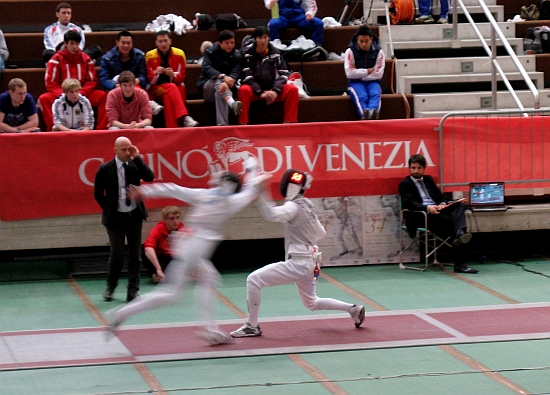
We know nothing about fencing, except that it’s very cool and extremely different from our usual activities. (Years ago I spent a few months at it, trying to get the hang of the basics, but eventually gave up.) So instead of wandering around outside in the sun and fresh air like everybody else, we sat inside for four hours breathing indoor-fluorescent-lights air and watching what amounts to a dramatically physical version of chess.
The City of Venice Cup is one of the most important elements in the Venetian events calendar. Even if you don’t care about sabers, en garde, touche’ or parry and riposte, you might be surprised to learn that this contest is a major component of the World Cup of fencing, Men’s Foil division. Which, I assume, leads eventually to the Olympics.
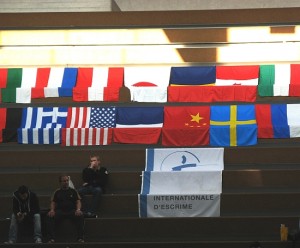
Venice is not merely one of only three cities holding meets composing the world Grand Prix of fencing, the other cities being Tokyo and St. Petersburg. This was the only Men’s Foil competition for the World Cup to be held in Italy. Yes, right here in can-you-bargain-for-a-gondola-ride Venice.
Therefore intense international attention was focused Saturday and Sunday on the athletes, which were among the best in the world. I noticed only a few of the country names on assorted teams: Japan, France, Ukraine, Germany, Korea, Russia, and the increasingly redoubtable China. It was impressive.
We got in (for free, like everybody else) to watch the end of the eliminations, the semi-final, and the final, which was broadcast live on national sports television. From about 3:00 to 7:00 PM, we sat on concrete risers surrounded by families, girlfriends, aficionados, assorted kids, and momentarily unoccupied athletes, most of whom urgently needed to go somewhere and then return by way of the tiny space in front of us. More was going on in the stands than there was on the floor. (I exaggerate, somewhat.) There may not have been thousands of spectators, but we still felt as if we’d parked ourselves on the shoulder of I-95.
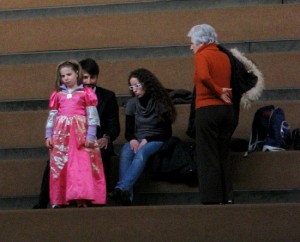
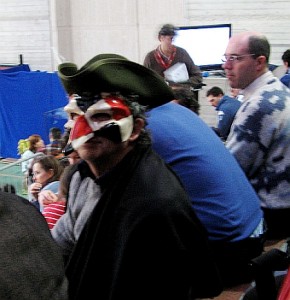
It was gripping to watch. You don’t need to be an expert in the sport, nor to be a fan of any particular competitor, to find yourself involved in what was obviously serious battle at an extremely high level. There were many exotic details — the judges’ gestures were as gnomic as those of a baseball catcher signaling the pitcher, or bidders at an auction — but even in complete ignorance you could appreciate the differing styles of the players and feel the intensity of their confrontation.
The winner by one point was Valerio Aspromonte (for the record), bringing joy to the old Bel Paese. It’s always great to win before a home crowd. Second, by one point, was a certain J.E. Ma, a tall, serene, spectacularly ferocious fencer from China. Third was a tie between Simoncelli and Cheremisinov (Russia). The trophies were large beautiful objects of blown Murano glass.
I was rooting for Ma, but didn’t dare clap or call out his name for fear of being lynched. I loved his concentration, his reflexes, his skill not only in scoring points but avoiding the attacks of his adversary.
Aspromonte’s arsenal of tactics involved a series of highly annoying antics. For example, his primal scream whenever he scored, or whenever his opponent scored. This must be a custom borrowed from soccer, but struck me as ridiculously out of place in a sport (like dressage) which was born of elegance and noblesse.
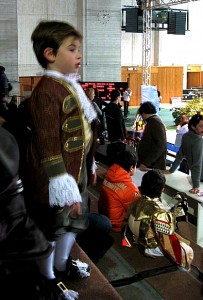
He also frequently stopped, however briefly, to attend to an endless series of temporary, perhaps genuine, injuries (rubbing his ankle — sprained? no, it’s okay — massaging his calf — torn muscle? no, it’s okay — manipulating his shoulder — inflamed rotator cuff? no, it’s okay), and so on. He changed foils three times. He even pulled off his mask after Ma’s foil touched it, rubbing his left temple as if having nearly missed being blinded. I still can’t understand what could have happened behind the wire wall that protects the face, but it was all part of the show. He reminded me of James Brown at the culminating moment of a concert, simulating near-collapse and being helped off the stage, only to suddenly spring to life again.
Outside, there were plenty of kids dressed up as Zorro, or Prince Charming, or a medieval knight, or any other character required to carry some sort of spadroon.
Inside a very ugly cement building there was brilliance and beauty flashing among men who had the real thing, and knew exactly how to use it.
I want to come back next year, but I may bring a big wool sock for Aspromonte. Bless his heart.
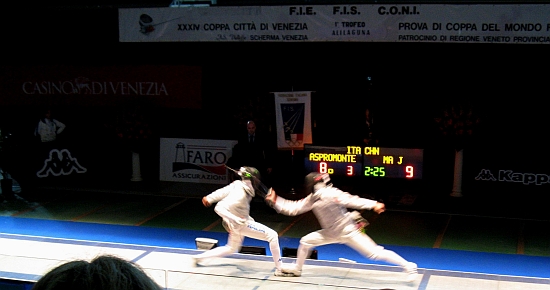

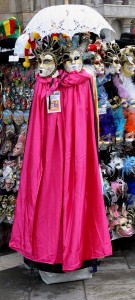



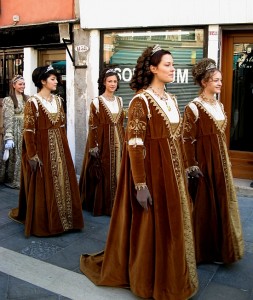
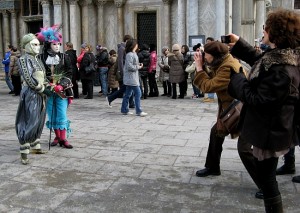
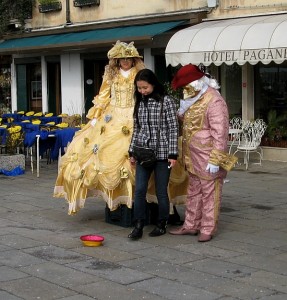
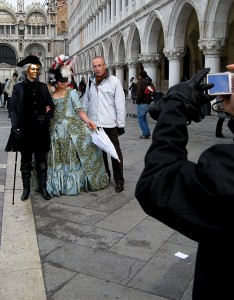
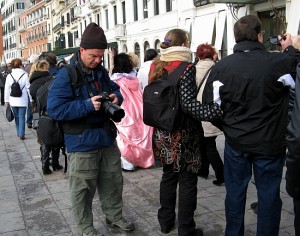
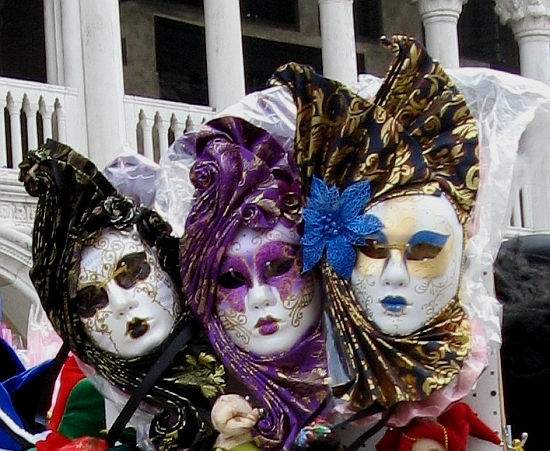
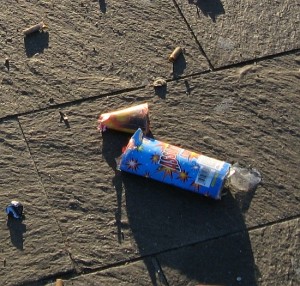


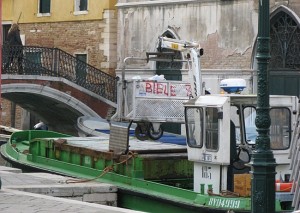
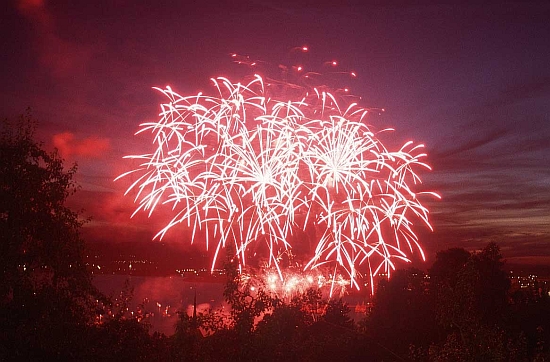
 After you had reveled in your Lucullan repast, you could have gone around the corner to the Piazza San Marco not only to watch the fireworks but create your own (metaphorically speaking) by throwing in your osculatory lot with all the other couples thronging the piazza who have been primed by weeks of publicity to come here to kiss each other at midnight.
After you had reveled in your Lucullan repast, you could have gone around the corner to the Piazza San Marco not only to watch the fireworks but create your own (metaphorically speaking) by throwing in your osculatory lot with all the other couples thronging the piazza who have been primed by weeks of publicity to come here to kiss each other at midnight.